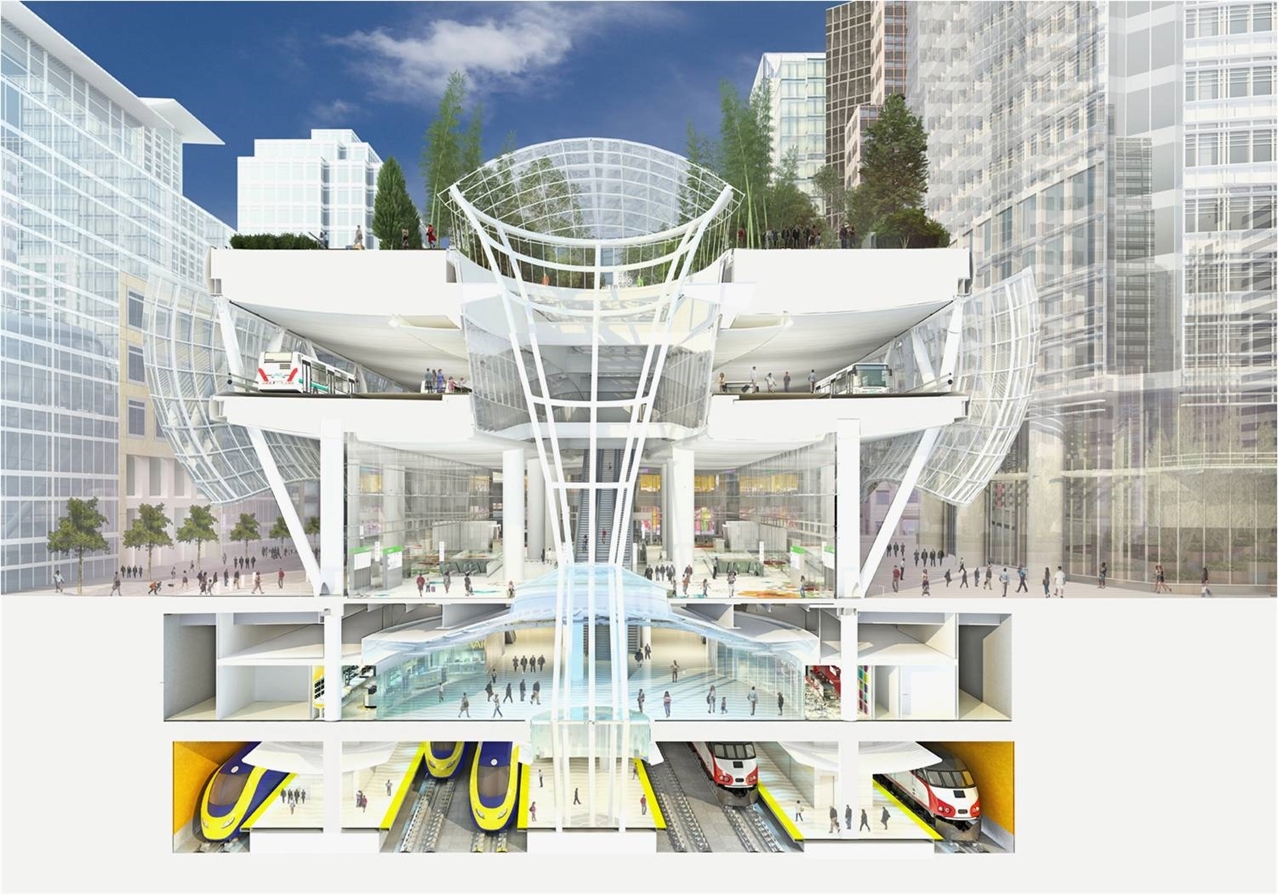
San Francisco's Transbay Transit Center is being rebuilt using value capture financing mechanisms.
See all the articles in the Value Capture Case Study series. >>
At MPC’s November 2011 roundtable on innovative financing tools for transportation funding, the Brookings Institution’s Rob Puentes offered sage advice for elected officials and policy makers: “We’ve run out of money. It’s time to start thinking!” he said.
Fifty-five years ago President Eisenhower signed the first federal transportation bill into law, spurring an unprecedented era of transportation construction. Today, most of that infrastructure has reached beyond its useful life, and returning it to a state of good repair – much less expanding it to serve a growing population and new economic realities – will require hundreds of billions of dollars. What’s more, as consumers continue to choose fuel-efficient vehicles over gas guzzlers, less frequent trips to the pump mean even fewer dollars to replenish the nation’s bankrupt Highway Trust Fund.
With the advancement of the federal long-term reauthorization stuck in Congress, and no increase for traditional transportation funding sources like the gas tax on the table, it’s up to states, cities, and regions to think differently about how to fund transportation projects. One tool in the transportation funding toolbox is value capture.
What is value capture?
Because well-planned transportation investments increase people’s access to desirable destinations, locations near these investments command higher land prices, benefiting land owners and developers; studies of the Chicago region show a 10 percent to 20 percent increase in land values near transit stations. Value capture mechanisms are a type of public financing where increases in the private land values generated by public transportation investments are “captured” to repay the cost of the public investment. Using value capture mechanisms to finance new or existing transportation infrastructure connects the benefit of the infrastructure investment with the cost to provide it.
Types of value capture mechanisms:
- Tax Increment Financing: A special district created during a development period, where the tax base is frozen at the predevelopment level (on the assumption redevelopment would not occur in the area without public investment or intervention). Property taxes continue to be paid, but taxes derived from increases in assessed values (the tax increment) resulting from new development either go into a special fund created to retire bonds issued to originate the development, or leverage future growth in the district.
- Land Value Tax: An additional tax solely on the land value of a property, without regard to improvements on the property.
- Special Assessment: An additional tax or assessment on the full value of a property, usually paid by property owners within a defined district Special Assessment District or Special Service Area that benefits from the improvement.
- Development Impact Fee: A one-time fee charged to a development based on a justifiable relationship between the impact of the proposed development and the improvements it makes.
- Joint Development: A municipality or agency utilizes land it owns, often in the form of surface parking lots or excess rail right-of-way, for a redevelopment project and then shares profits.
MPC’s new series Value Capture Case Studies will highlight ways in which cities and regions across the country are using value capture mechanisms to fund transportation plans. These case studies will present novel learnings for the Chicago region as it grapples with how to pay for necessary transportation improvements. This series is intended to spur creative thinking and fresh ideas turning Chicago’s transportation plans into reality.